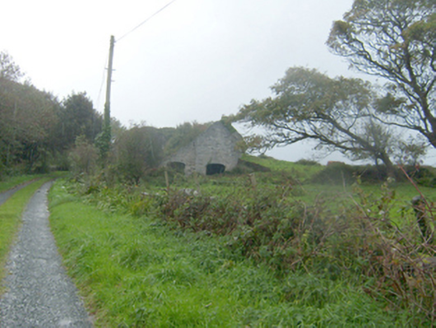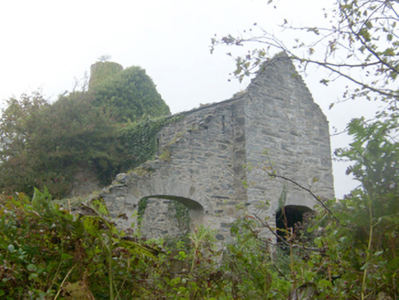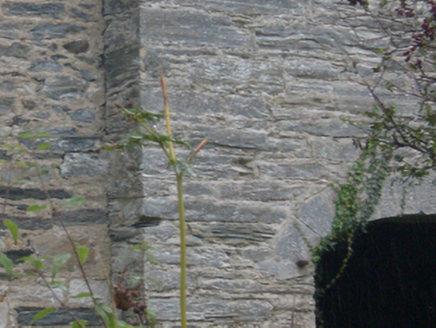Survey Data
Reg No
40901763
Rating
Regional
Categories of Special Interest
Social, Technical
Previous Name
Mulroy House
Original Use
Kiln
Date
1860 - 1880
Coordinates
215221, 437594
Date Recorded
04/10/2010
Date Updated
--/--/--
Description
Freestanding single-bay former lime kiln on rectangular-plan, built c. 1870, having single-bay single-storey outbuilding extension to south and with earth embankment to the north and west for loading stone into the kiln. Freestanding yellow brick chimneystack to rear (west). Now out of use. Pitched roof, now collapsed, to main building, mono-pitched roof to attached outbuilding to the south. Roughly crossed and squared rubble stone walls with tooled stone quoins to corners. Two segmental-headed openings with tooled stone voussoirs to north. Set back from road in overgrown site to the north-west of Mulroy House (see 40901712), and adjacent to Mulroy Bay to the east of Carrickart.
Appraisal
This interesting large-scale former lime kiln, erected during the second half of the nineteenth-century, survives in good condition and retains its early character. Its location adjacent to Mulroy House (see 40901712) suggests that it was originally built for the Earls of Leitrim to provide lime for use on the estate, and, possibly, may have been used to provide lime for the construction of the main house and\or ancillary buildings to site. It is built of unusually good quality masonry for a building of its type, which also suggests it originally had connections with the Mulroy estate. The tall yellow brick chimneystack to the west is a feature not found on smaller-scale kilns, and is an interesting addition to the landscape to the east of Carrickart. The embankment to the rear was built\modified to allow for the easy loading of stone through an opening in the roof structure, while the aperture to the front was used to fire the oven to burn the stone and produce lime. The stone for use in this kiln was probably scoured from a small quarry adjacent to the west (Ordnance Survey twenty-five inch map of 1906). Lime kilns appear to have come into popular use in Ireland during the eighteenth century and were a very common feature in the rural landscape up until the first decades of the twentieth century. They were used to burn limestone to produce lime, which was used as an agricultural fertilizer and spread on agricultural land, or in construction as a mortar and a render. Lime was also used for lime-washing buildings, particularly farm buildings, as it was regarded as a cleansing agent at the time. This well-built former kiln and attached outbuilding is appealing and unassuming element of the agricultural\industrial and social heritage of County Donegal, and forms part of a large group of structures associated with Mulroy House.





